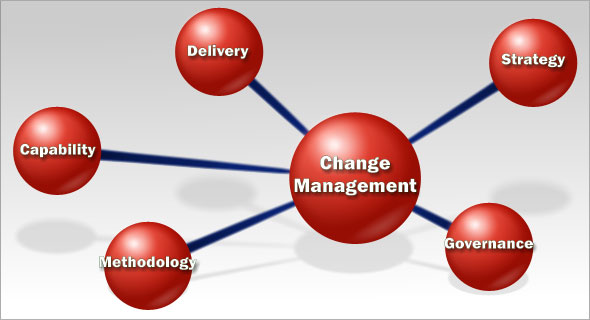Change management is an approach to transitioning individuals, teams, and organizations to a desired future state. In a project management context, change management may refer to a project management process wherein changes to the scope of a project are formally introduced and approved.
Regardless of the many types of organizational change, the critical aspect is a company’s ability to win the buy-in of their organization’s employees on the change. Effectively managing organizational change is a four-step process:
- Recognizing the changes in the broader business environment
- Developing the necessary adjustments for their company’s needs
- Training their employees on the appropriate changes
- Winning the support of the employees with the persuasiveness of the appropriate adjustments
With the business environment experiencing so much change, organizations must then learn to become comfortable with change as well. Therefore, the ability to manage and adapt to organizational change is an essential ability required in the workplace today. Yet, major and rapid organizational change is profoundly difficult because the structure, culture, and routines of organizations often reflect a persistent and difficult-to-remove “imprint” of past periods, which are resistant to radical change even as the current environment of the organization changes rapidly.
Due to the growth of technology, modern organizational change is largely motivated by exterior innovations rather than internal moves. When these developments occur, the organizations that adapt quickest create a competitive advantage for themselves, while the companies that refuse to change get left behind. This can result in drastic profit and/or market share losses.
Organizational change directly affects all departments from the entry level employee to senior management. The entire company must learn how to handle changes to the organization.
Successful change management is more likely to occur if the following six steps are included:
- Benefits management and realization to define measurable stakeholder aims, create a business case for their achievement (which should be continuously updated), and monitor assumptions, risks, dependencies, costs, return on investment, dis-benefits and cultural issues affecting the progress of the associated work
- Effective communication that informs various stakeholders of the reasons for the change (explain why), the benefits of a successful implementation (what is in it for us, and you, what’s the added value) as well as the details of the change (when? where? who is involved? how much will it cost?)
- Devise an effective education, training and/or skills upgrading scheme for the organization
- Counter resistance from the employees of companies and align them to overall strategic direction of the organization
- Provide personal counseling (if required) to alleviate any change-related fears
- Monitoring of the implementation and fine-tuning as required
